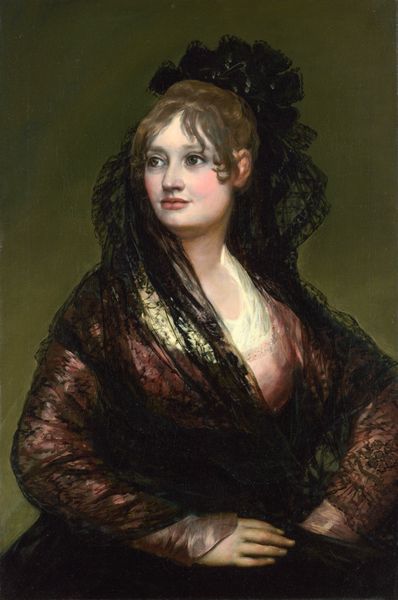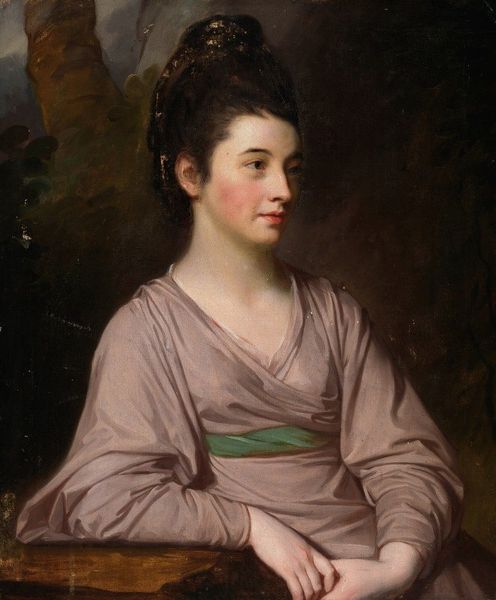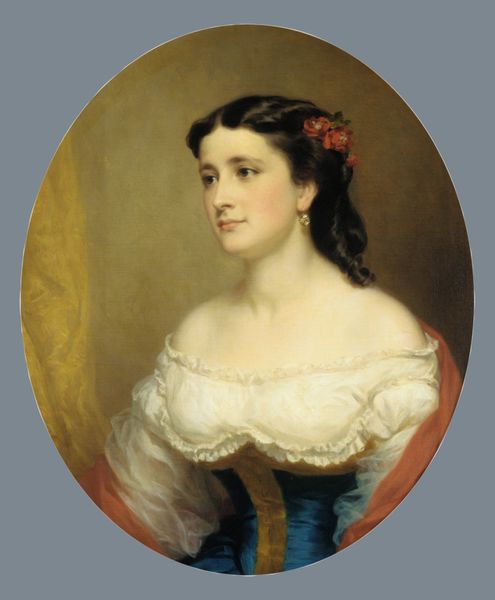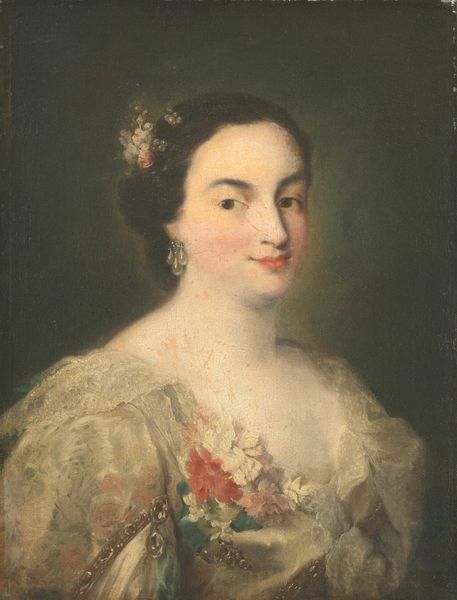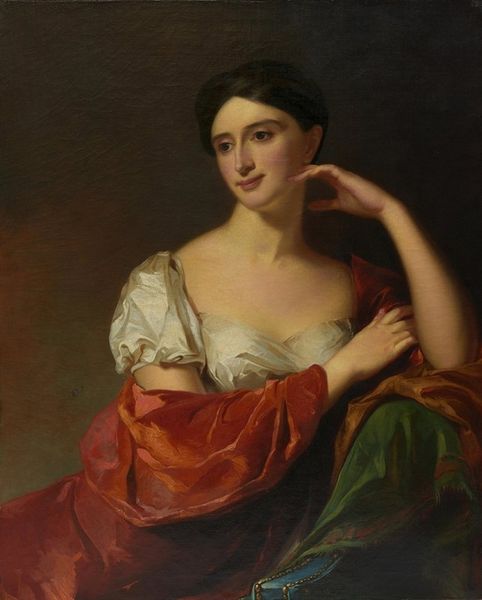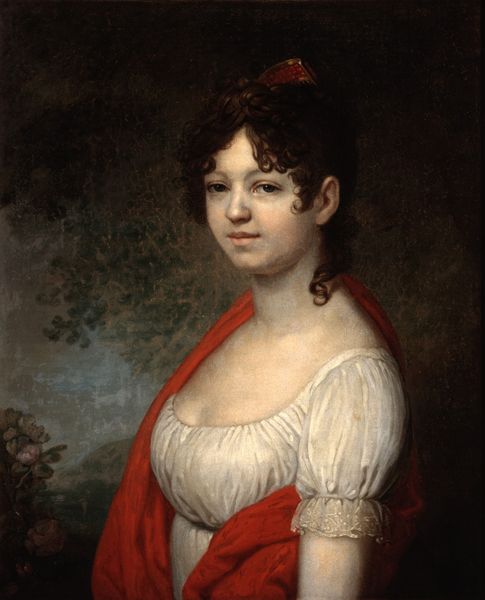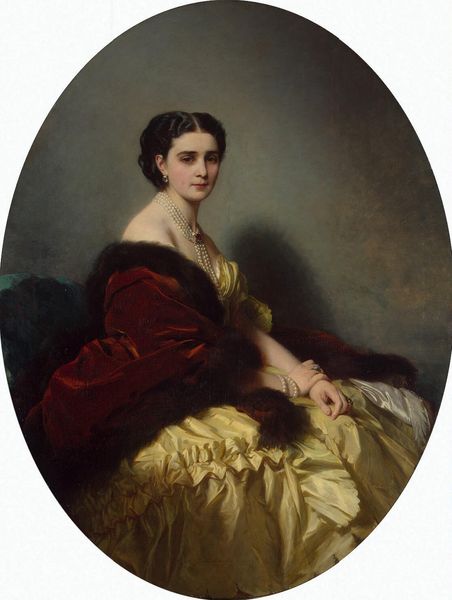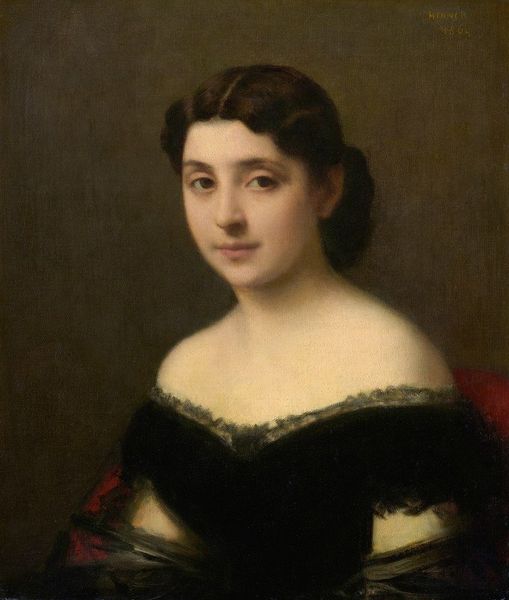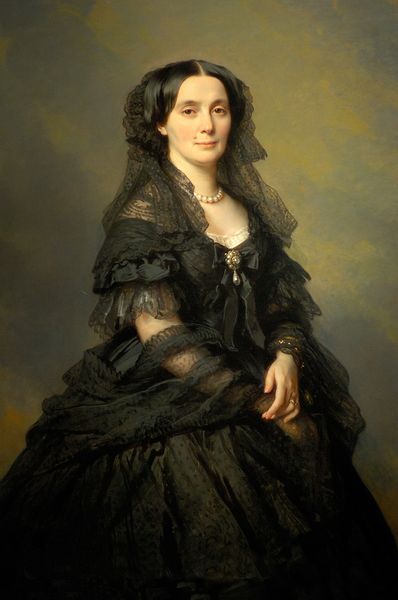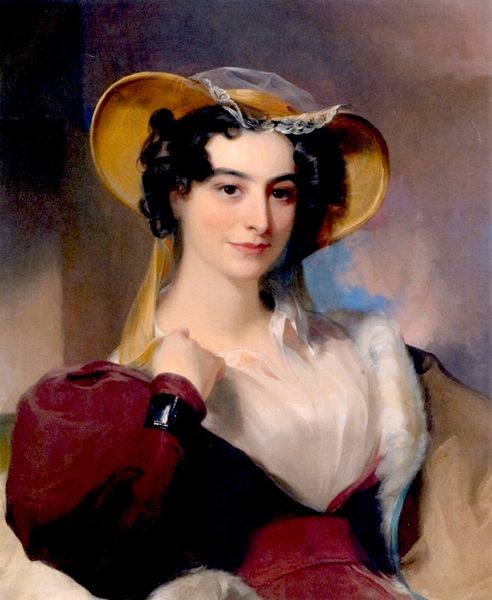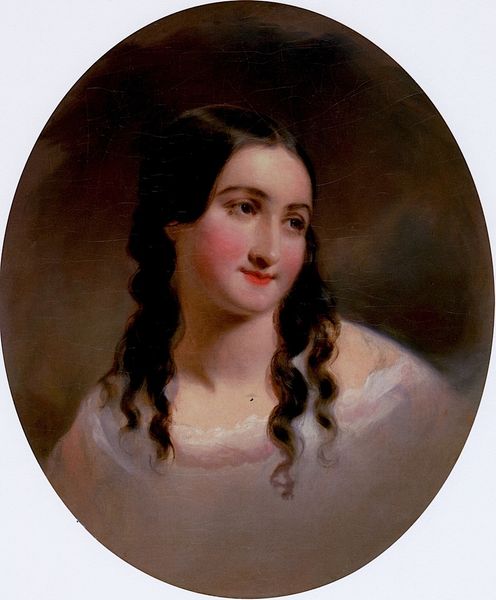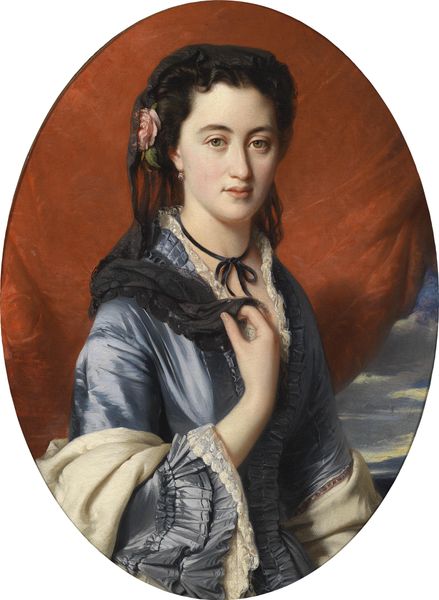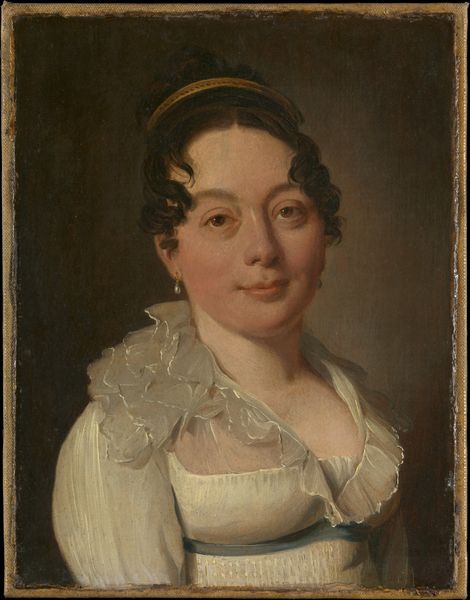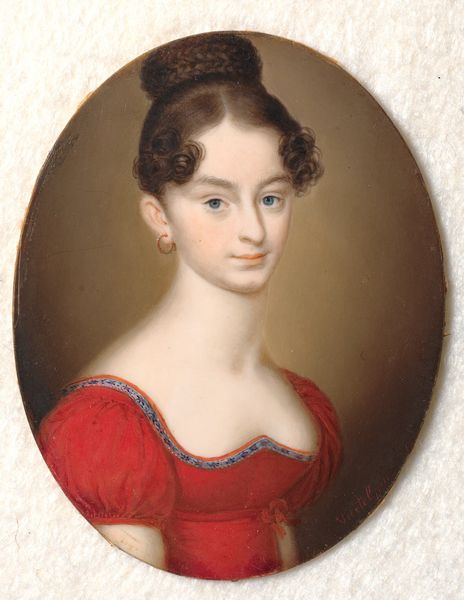
painting, oil-paint
#
portrait
#
self-portrait
#
painting
#
oil-paint
#
romanticism
Dimensions: 68 x 54 cm
Copyright: Public domain
Jean-Auguste-Dominique Ingres painted this portrait of his wife, Madame Ingres, using oil on canvas. As a leading figure in the French Academy, Ingres championed a conservative approach to art, emphasizing classical ideals and resisting the rising tide of Romanticism. Portraits like this one served to reinforce the social standing of the sitter, and, by extension, the artist himself. This image creates meaning through the visual codes of wealth and status: her garments and her calm, composed demeanor speak to a life of privilege and refinement. France, during Ingres' time, was a society deeply entrenched in tradition and hierarchy. The Academy played a crucial role in maintaining these social structures, dictating artistic standards and controlling access to patronage and recognition. To truly understand the portrait, we need to delve into the social history of 19th-century France. Researching the Ingres' position within the Academy, the prevailing artistic tastes of the time, and the social conventions surrounding portraiture can reveal the complex interplay of power, status, and artistic expression that shaped this painting. The meaning of art is always contingent on social and institutional context.
Comments
No comments
Be the first to comment and join the conversation on the ultimate creative platform.
